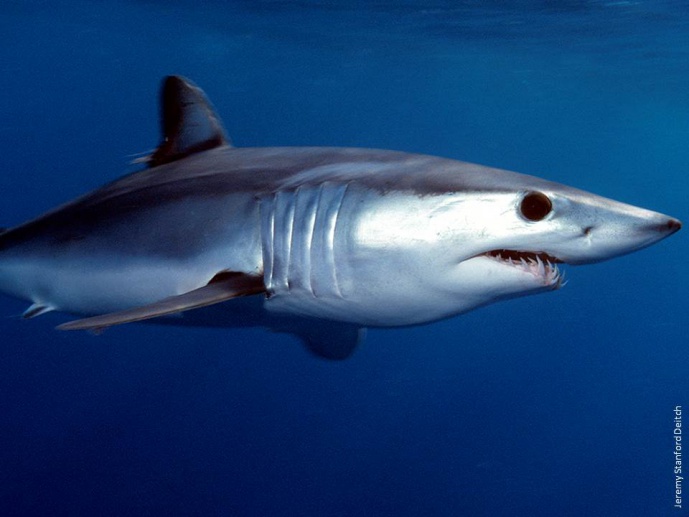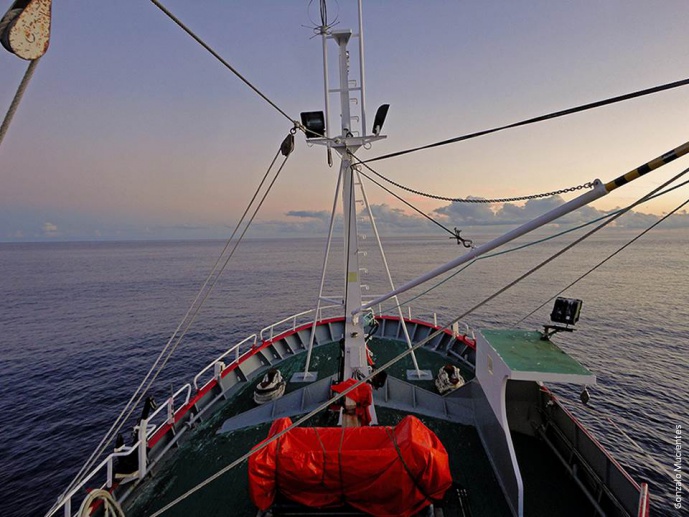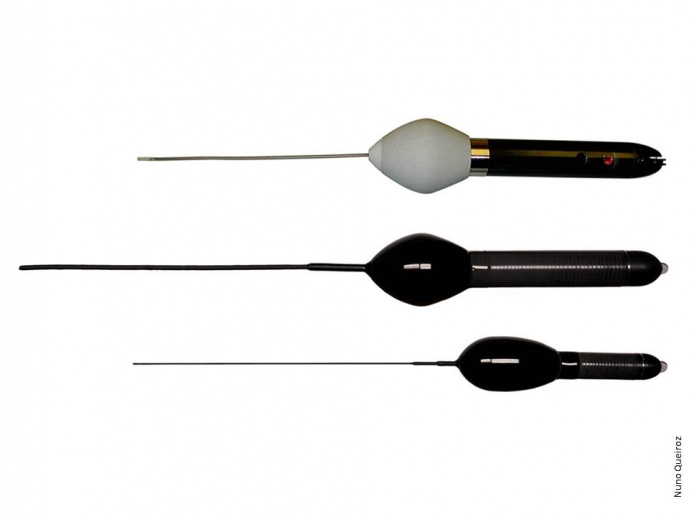Behaviour, critical habitat and fisheries interactions of pelagic sharks in the North Atlantic Ocean
Pelagic predators, such as blue Prionace glauca and mako sharks Isurus oxyrinchus are facing widespread declines due to fisheries expansion into the open ocean within the past few decades [1]. Recent studies suggest reductions in relative abundance of up to 80% have occurred in as little as 15 years for some species [1]. Many shark species are undoubtedly susceptible to over-harvesting because of slow growth rates, a late age at maturity and low fecundity [2]. Management of pelagic shark populations is poorly developed and takes little account of behavioural characteristics such as spatial and temporal movements and distributions. Recent studies show large sharks’ exhibit sex-biased dispersal and often return to favoured areas [3-7]. There is also evidence that some species remain faithful to particular regions with males and females segregating into different regions for at least part of the year [8, 9]. This raises the issue of whether fisheries concentrate in key critical areas where, for example, the majority of a population aggregate for feeding or mating opportunities, or where important components of a population (e.g. juveniles) choose to remain, are disproportionately affecting key life-history stages. This convergence of sharks and fisheries in the same productive habitat is likely to be a central driver underlying documented declines. Despite this, and even though blue sharks are listed as near-threatened and the mako as vulnerable [10], no protection measures are currently in place, or have been proposed for these species anywhere in the world. Consequently, we need to know the extent to which fisheries overlap with different components of blue and mako shark populations in space and time, and whether candidate protected areas in the open ocean would afford appropriate protection to reduce the observed high rates of fishing-induced mortality that are unsustainable in the long-term.\nThe aim of the proposed research is, for the first time, to determine long-term (over 4 months) movements and behaviour of blue and mako sharks in the Atlantic from satellite telemetry, and to use this information to identify and characterise critical habitats of these species, for testing the extent of space-use overlap with pelagic fisheries. This work will provide novel data which will be used to test quantitatively the efficacy of developing marine protected areas for highly mobile open-ocean species. The specific objectives will be to: a) use state-of-the-art tracking technology to determine long-term horizontal and vertical movements of blue and mako sharks and to investigate the dispersal behaviour of different components of the population, i.e. juvenile/adult, males/females to identify whether return migrations to preferred habitats by individuals occur within an annual period; b) relate geolocations and behaviour of individual sharks to high-resolution maps of environmental variables (e.g. bathymetry, temperature, frontal boundaries, sea altimetry and productivity) to quantitatively characterise the preferred habitat of the sexes at different stages of maturity; c) quantify using GIS technology and geostatistics the extent of spatial and temporal overlap of shark distributions, including migrations, with the positions and number of satellite-tracked longlining fishing vessels; and finally d) assess the vulnerability of sharks to different fishing location and effort scenarios and test through modelling the effect of future open ocean marine protected areas for these species. The research programme will span a three-year period, with field deployments of telemetry units on sharks, track and environmental data integration occurring each year, and space-use overlap with fisheries and modelling routines undertaken during the final year.\nOur research team has particular experience and specific expertise with this tracking technology since 1999 when the first generation of satellite tags became available and were deployed by us on basking sharks [11]. The group is considered world leading in its novel application of this technology for studying shark behaviour and ecology [12]. We have also direct experience with blue and mako sharks having deployed over 30 tags in the past 3 years. Crucially, our previous research on these species has allowed the development of methods for maintaining sharks in good condition during tag attachment procedures, resulting in healthy sharks displaying normal behaviour soon after release. Recently, methods have been developed for keeping the tags attached to sharks for longer time periods (over 4 months). In addition, we have secured matching funds that together with this proposal will ensure the success of the proposed study.
Nicolas Edmund Humphries, David William Sims





